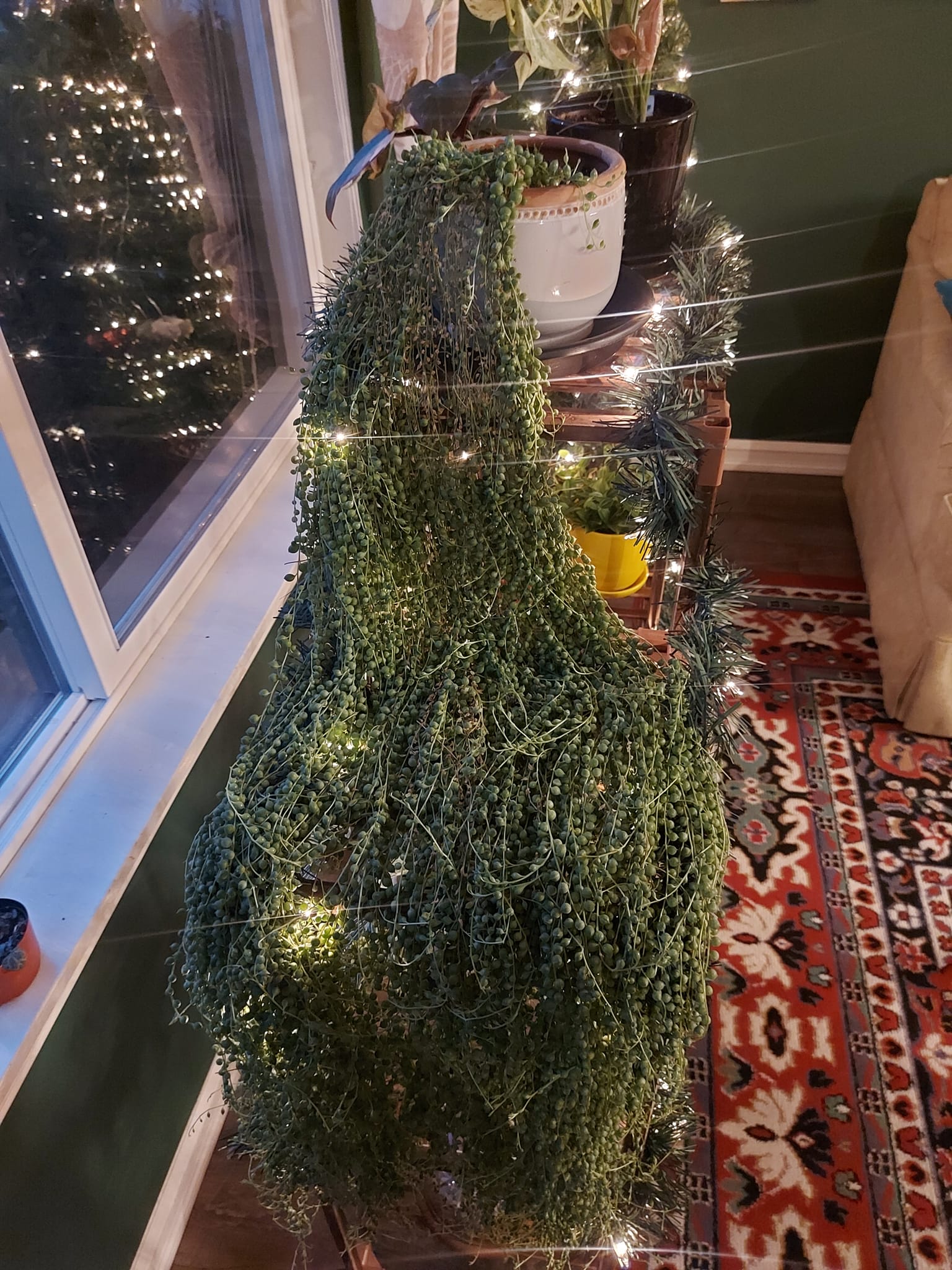
The String of Pearls (Senecio rowleyanus) is a mesmerizing succulent known for its cascading vines of bead-like leaves. However, many plant enthusiasts struggle with sparse growth, leaving their plant looking thin rather than lush and full. If you’re wondering how to transform your string of pearls from sparse to stunning, you’re in the right place. This guide will walk you through essential care techniques, propagation methods, and expert tips to help your plant flourish.
I’ve provided detailed information in the article below to help with your concerns, However, if you still have questions or need more help, feel free to share photos of your plants or describe your issue on our Facebook Group. Just join the group and leave a comment on the most recent post — either I or someone from the community will respond as soon as possible. We also share helpful and unique plant care tips daily, so consider joining the group to stay updated!
How to Encourage Fuller Growth
If your String of Pearls looks sparse, there are several techniques to promote bushier growth. Let’s explore them one by one.
1. Provide Optimal Lighting
One of the most common reasons for sparse growth is inadequate lighting. String of Pearls thrives in bright, indirect sunlight.
Best Lighting Practices:
- Place your plant near a south- or east-facing window where it gets gentle morning sunlight and bright indirect light throughout the day.
- If natural light is insufficient, use a full-spectrum grow light to supplement.
- Rotate your plant every few weeks to ensure even light exposure on all sides.
- Avoid placing your plant in direct afternoon sunlight, as excessive exposure can lead to leaf scorching.
2. Master the Art of Watering
Overwatering and underwatering both contribute to sparse growth. String of Pearls stores water in its leaves, meaning it needs a careful watering routine.
Watering Tips:
- Use the soak-and-dry method: Water thoroughly, allowing excess water to drain out, then wait until the soil is completely dry before watering again.
- Adjust watering frequency based on the season: During summer, you may need to water once every 7-10 days, while in winter, once every 3-4 weeks is sufficient.
- Observe your plant’s pearls: Plump, firm pearls indicate good hydration, while shriveled pearls suggest a need for watering.
- Use a watering can with a narrow spout to direct water to the soil instead of misting the leaves, which can encourage rot.
- Avoid using hard tap water; opt for filtered or rainwater to prevent mineral buildup in the soil.
3. Use the Right Soil Mix
A well-draining soil mix ensures the roots remain healthy and capable of absorbing nutrients efficiently.
Best Soil Mix for String of Pearls:
- Succulent or cactus mix (readily available in stores)
- Mix in perlite, pumice, or coarse sand to improve aeration and drainage
- Avoid heavy potting soils that retain moisture too long, as they can cause root rot
- Consider using a shallow, well-draining pot to further enhance soil drying speed
4. Fertilize Wisely
Providing the right nutrients will encourage faster and fuller growth.
Fertilization Tips:
- Use a diluted liquid succulent fertilizer every 4-6 weeks during the growing season (spring and summer).
- Avoid high-nitrogen fertilizers, as they can encourage excessive, leggy growth instead of compact, healthy vines.
- If using organic fertilizers, consider worm castings or a diluted seaweed solution to promote balanced growth.
- Reduce feeding in fall and winter, as the plant enters a dormant phase.
5. Regular Pruning and Pinching
Trimming your plant might seem counterintuitive, but regular pruning stimulates new growth and creates a bushier appearance.
How to Prune for Fullness:
- Use clean, sharp scissors or pruning shears to trim leggy, unhealthy vines.
- Pinch back the tips of longer stems to encourage lateral branching, which results in denser growth.
- If your plant has bald patches, trim back surrounding vines and tuck them into the soil to encourage new root formation.
- Remove any dead or shriveled pearls to keep the plant looking fresh and healthy.
- Prune in early spring to promote vigorous growth during the active season.
6. Strategic Vine Arrangement
Since String of Pearls grows by trailing, arranging the vines properly in the pot can make a significant difference in how full it appears.
Arrangement Techniques:
- Loop the vines back into the soil rather than letting them trail immediately. This encourages rooting at multiple points, leading to a denser look.
- Use propagation cuttings to fill gaps in the pot, making the plant appear lusher.
- Rotate the pot every two weeks to ensure that the plant grows evenly in all directions.
7. Propagation: The Secret to a Fuller Look
Propagating new stems and reinserting them into the pot is an excellent way to add fullness.
Step-by-Step Propagation Guide:
- Cut a healthy vine (4-6 inches long) just below a node.
- Let the cutting dry for 24 hours to prevent rotting.
- Plant the cuttings directly into the soil or lay them on the surface, pressing lightly.
- Water sparingly until new roots form.
- Replant multiple cuttings back into the main pot for a denser appearance.
Choosing the Right Pot
A well-chosen pot can make a difference in how your String of Pearls grows.
Ideal Pot Selection:
- Shallow, wide pots encourage horizontal growth.
- Drainage holes are a must to prevent root rot.
- Terracotta pots help absorb excess moisture.
Common Problems and How to Fix Them
Even with proper care, challenges may arise. Here’s how to troubleshoot common issues.
Yellowing Leaves
- Cause: Overwatering
- Fix: Allow soil to dry completely before watering again.
Shriveling Pearls
- Cause: Underwatering
- Fix: Increase watering frequency, but avoid overdoing it.
Leggy Growth
- Cause: Insufficient light
- Fix: Move to a brighter location or use a grow light.
